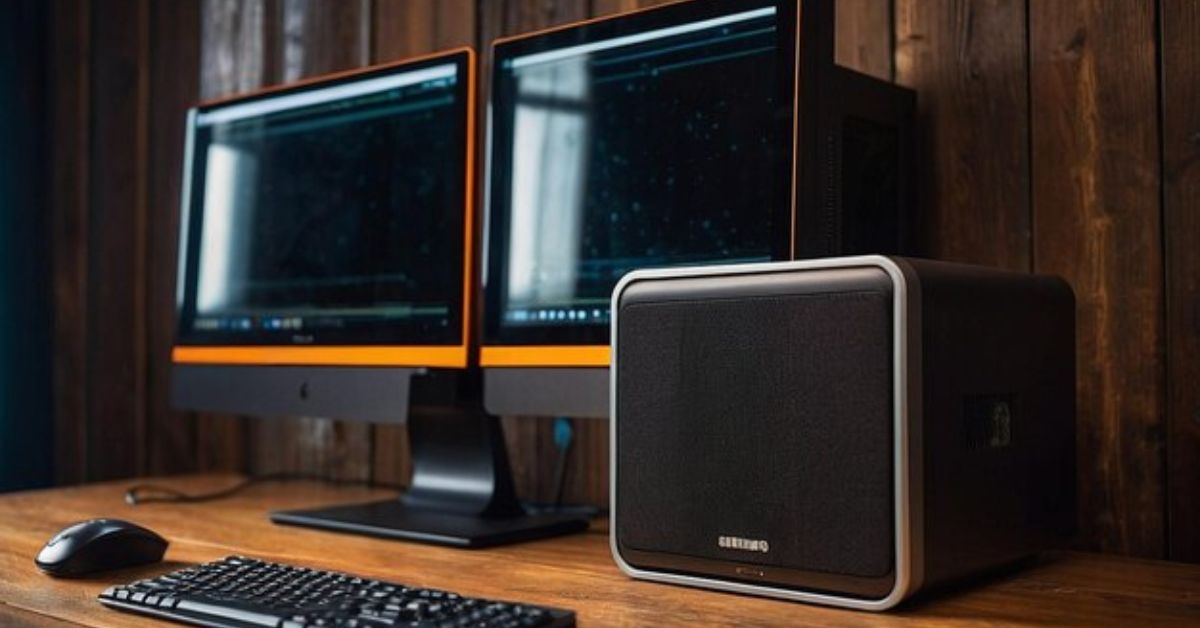In today’s fast-paced, tech-driven world, the demand for compact yet powerful computing solutions is growing rapidly. Enter the Mini PC—a small, highly efficient, and versatile device that can handle everyday tasks while occupying a fraction of the space of traditional desktop towers. From gaming and home theater setups to office use and portable computing, it have become an attractive choice for many users. This comprehensive guide delves into everything you need to know about mini PCs, their advantages, limitations, and how to choose the right one for your needs.
What is a Mini PC?
A Mini PC is a small, lightweight computer that provides most of the functionality of a traditional desktop PC. Despite their compact size, it come packed with powerful hardware, making them suitable for various tasks, including general productivity, media consumption, gaming, and even light content creation.
The key difference between a mini PC and a traditional desktop is the form factor. They are designed to save space without compromising performance, often resembling a small box or even a slightly larger external hard drive. These systems typically rely on integrated components to reduce size, which makes them quieter and more energy-efficient than their larger counterparts.
Types of Mini PCs
Mini PCs come in different shapes, sizes, and configurations, designed to meet various user needs. Here are the main types of it available on the market:
Mini Desktops
Mini desktops are compact versions of traditional desktop PCs, offering similar computing power but in a smaller chassis. They can range from basic models for everyday computing tasks to more powerful configurations that can handle heavier workloads like video editing or gaming. Many mini desktops support external storage and graphics cards, making them highly versatile for both personal and professional use.
Stick PCs
Stick PCs are ultra-compact mini PCs that plug directly into a monitor or TV’s HDMI port. They are roughly the size of a USB flash drive and are incredibly portable, making them ideal for those who need computing on the go. Stick PCs are primarily used for basic tasks like web browsing, streaming, and word processing.
While they’re not suitable for intensive workloads, stick PCs provide a low-cost, space-saving solution for users who need a computer for light tasks.
Gaming Mini PCs
Gaming mini PCs offer powerful hardware in a small form factor, catering to gamers who need both performance and portability. These mini PCs often feature dedicated graphics cards, high-performance CPUs, and sufficient cooling systems to handle resource-intensive games. While they may not offer the same level of upgradeability as full-size gaming towers, gaming mini PCs deliver excellent performance in a compact design, ideal for gamers with limited space.
All-in-One Mini PCs
All-in-one mini PCs combine the computer and monitor into a single unit, often with the PC components integrated into the back of the display. These systems save even more space and are perfect for minimalistic setups. While they typically offer fewer upgrade options compared to standalone mini PCs, all-in-one systems are convenient and user-friendly.
Advantages of Mini PCs
Mini PCs come with numerous benefits that make them a popular choice for users seeking compact and efficient computing solutions. Here are some of the key advantages:
Space Efficiency
The most obvious benefit of mini PCs is their compact size. Mini PCs take up significantly less space than traditional desktops, making them perfect for small apartments, dorm rooms, or offices where desk space is limited. Their portability also makes them easy to move or mount behind a monitor, freeing up even more workspace.
Energy Efficiency
Mini PCs are designed to be energy-efficient, using less power than traditional desktops. This not only helps reduce your electricity bill but also makes them more environmentally friendly. Many mini PCs use laptop-grade components, which are built for low power consumption, making these devices ideal for users looking to minimize their energy usage.
Portability
Thanks to their small size and lightweight design, mini PCs are highly portable. You can easily carry a mini PC in a backpack or briefcase, making them a great choice for users who need to take their system on the go. This portability makes mini PCs an excellent option for traveling professionals, students, or anyone who needs access to a computer in multiple locations.
Versatility
Mini PCs are highly versatile, offering a range of applications depending on the model. They can be used for everyday tasks like browsing the internet, watching movies, and working on documents, but many are also capable of more advanced tasks such as gaming, content creation, and media streaming. With various models available, you can find a mini PC to fit nearly any need.
Quiet Operation
Mini PCs typically produce less noise compared to full-sized desktop systems. Many mini PCs use passive cooling systems or low-noise fans, which results in quieter operation, making them ideal for noise-sensitive environments like offices or home theaters.
Disadvantages of Mini PCs
While mini PCs offer many advantages, there are some limitations that potential buyers should consider:
Limited Upgradeability
Due to their compact form factor, many of it offer limited upgrade options compared to traditional desktops. While you can often upgrade the RAM or storage, upgrading components like the CPU or GPU may be more difficult or impossible. If you’re looking for a system that can evolve with future technology, you might find the upgrade limitations of mini PCs a downside.
Lower Performance in Budget Models
Although there are high-performance mini PCs available, budget models often come with lower-end components that may not be suitable for intensive tasks like gaming or video editing. If you need a powerful machine, you may need to invest in a higher-end mini PC, which can get costly.
Fewer Ports
Due to their smaller size, mini PCs typically have fewer ports than traditional desktops. While most mini PCs include essential ports like USB, HDMI, and audio jacks, they may lack more specialized connections or expansion options. Users with multiple peripheral devices may need to invest in a USB hub or dock to meet their connectivity needs.
How to Choose the Right Mini PC
Choosing the right mini PC involves considering your specific needs, preferences, and budget. Here are the main factors to keep in mind when selecting a mini PC:
Purpose
First, consider the primary purpose of your mini PC. Are you using it for general productivity tasks like web browsing, streaming, and document editing? Or do you need a more powerful machine for gaming, content creation, or work-related tasks? Knowing your intended use will help you narrow down your choices.
Processor (CPU)
The processor is the heart of any PC, including mini PCs. Budget models often feature low-power CPUs like Intel Celeron or Pentium processors, which are suitable for basic tasks. However, if you need more power, look for mini PCs equipped with Intel Core i5, Core i7, or AMD Ryzen processors. These offer better performance for multitasking, gaming, or creative work.
Graphics
For gaming, video editing, or 3D rendering, you’ll need a mini PC with good graphics capabilities. While many of it come with integrated graphics (which are fine for most basic tasks), look for models with dedicated GPUs like NVIDIA or AMD for more demanding applications.
Storage and Memory
Storage and RAM are crucial for performance. Many of it come with SSD storage, which is faster and more reliable than traditional HDDs. Consider getting a mini PC with at least 8GB of RAM for smooth multitasking, though 16GB or more is recommended for more intensive applications.
Ports and Connectivity
Check the available ports and connectivity options to ensure that the mini PC meets your needs. Look for USB 3.0, HDMI, Ethernet, and Bluetooth support, especially if you plan to connect external monitors or multiple peripherals. Some of it also offer Wi-Fi 6, which ensures faster wireless connectivity.
Operating System
Mini PCs come with different operating systems, including Windows, Linux, and macOS for Apple’s Mac mini. Choose the OS that best fits your familiarity and the software you need to run. Some of it also come without an operating system, allowing you to install your own.
Popular Mini PC Models in 2024
Here are some of the best mini PCs available on the market in 2024:
- Intel NUC: The Intel NUC series is known for its compact design and versatility, offering a range of configurations for both basic and high-performance tasks.
- Apple Mac mini: Powered by Apple’s M1 or M2 chip, the Mac mini delivers impressive performance in a sleek and compact design, ideal for creative professionals and Apple users.
- ASUS PN Series: ASUS offers a variety of it in their PN series, known for their compact size, energy efficiency, and affordability.
- HP Z2 Mini: A workstation-class mini PC, the HP Z2 Mini is perfect for creative professionals who need powerful hardware in a compact form factor.
Conclusion:
Mini PCs offer a compelling balance between performance, size, and versatility. Whether you need a space-saving computer for your home office, a portable system for travel, or a compact gaming rig, it provide an excellent solution for various computing needs. By carefully considering factors like performance, storage, and connectivity, you can find a mini PC that perfectly fits your requirements and lifestyle.










